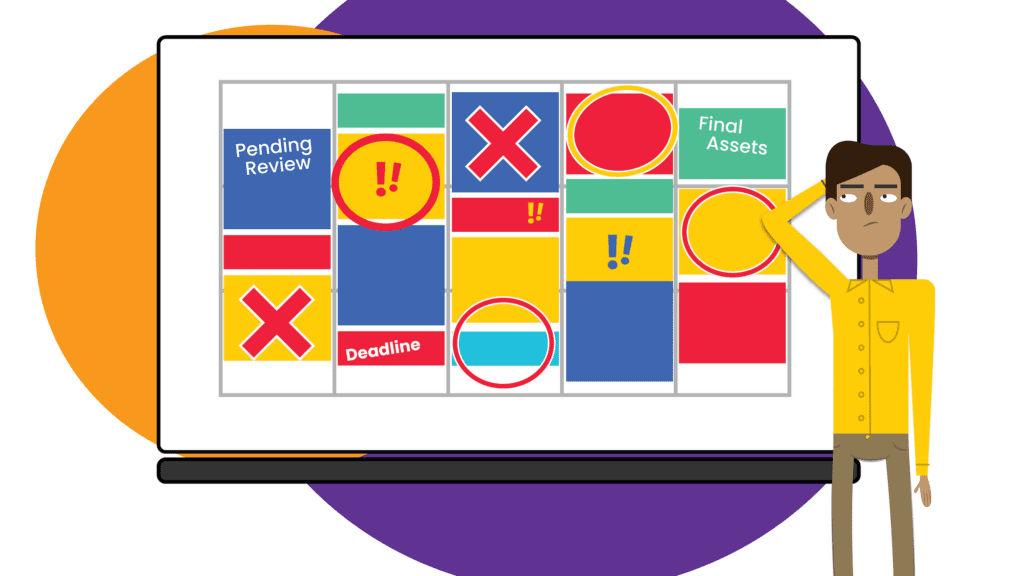For many B2B marketers, the thinking around content creation sometimes goes: if I can crank out ten blogs in the time it takes to do one thought leadership paper, doesn’t it make more sense to focus on the blogs?
Of course, this is understandable. According to the Content Marketing Institute, most B2B marketers say their greatest challenge is a lack of resources. So, when those same marketers look at their content schedules, they’re trying to do more with less. That means that the longer, more process-cumbersome and time-consuming pieces of content — rich content like thought leadership papers and briefs — are often the first to end up on the chopping block.
But in the B2B space, it is a mistake to de-prioritize rich content. B2B buyers operate on longer timescales and are often making multi-million-dollar decisions. They need more information and greater detail, and often intentionally seek out multiple sources before making a decision — including you and your competitors. Therefore, the B2B content game is all about building credibility through the buyer’s journey with multiple pieces of content over the course of days, weeks, months, or even years.
Rich content does that in a way that can’t be achieved with any number of blogs, social media posts, or Google ads.
Rich Conversations Require Rich Content
Directors of engineering, VPs of technology, CTOs, and even CEOs in B2B organizations are often making buying decisions for hundreds or thousands of items, or they’re contracting services and solutions on a company-wide scale. The cost and impact of these decisions can be enormous, and the level of consideration these content consumers put into a specific supplier’s offering scales proportionally with the depth of the information they’re consuming.
While short content is the most “popular” among B2B marketers, 53% say case studies or customer stories are the most effective, followed closely by e-books and thought leadership papers at 51%.
This is because driving value and establishing credibility is crucial in the B2B space, and there are no shortcuts to it. To convince a patient and savvy B2B audience of your organization’s expertise and value, your content must create the perception that your organization and its offerings are the best and most trustworthy option. The less-rich forms of content that should be part of your overall content strategy aren’t built to meet this need. They may introduce someone to a topic, grab attention, or even start a conversation — but they don’t go much farther than that.
As such, it doesn’t matter how many blogs or brochures you create, or how many webpage visits you have; if your readers have deeper questions or require deeper insights that can only be answered in case studies, briefs, or thought leadership papers, you should invest the resources needed to produce them. And trying to adapt introductory content to serve the needs of richer content is a doomed effort. That’s because a blog won’t provide the thought leadership insights the way a thought leadership paper will, no matter how it’s written.
Investments in Rich Content Have Both Direct and Indirect Payoffs
Of course, the process of content production generally becomes more involved and time-consuming the richer the content gets. But that’s a good thing.
The number one challenge B2B marketers cite in trying to scale content production is not being able to repurpose content. So, while at first glance a half-dozen blogs might look like better value for the money than a paper or brief, oftentimes your rich content and the processes that lead to rich content deliver considerably more value for the effort.
For example, a single interview with an SME and a little bit of research will probably get you a completed blog draft. But a thought leadership paper might require multiple interviews, a lot more research, and a few internal rounds of content review. However, by the end of the process, you not only end up with a thought leadership paper but also all the fruits of the detailed, lengthy, and involved interviewing, researching, and finessing of messaging and positioning. This often leads to ideas and information that can be leveraged for more content.
So, by developing a single piece of rich content you can create a wellspring of information to draw on for additional content marketing efforts. This can create significant value when operating with limited time, resources, and budget.
Multiple Audiences Are Easier to Reach With Richer Content
Rich content is also the most efficient and effective way to address multiple technical and executive-level personas simultaneously with the level of detail they each need to make buying decisions.
Typically, decision-makers are the top priority for your content marketing efforts. But it’s often just as important to reach the influencers they rely on. These influencers are often more technically-minded or skilled in a specific area than the ultimate decision-maker, whose job is to focus on the higher-level, executive view — where the ship is going, not how the sails work.
Your influencer personas are primarily concerned with the technical and practical aspects of the product, solution, or service they’re learning about, and whether the company with these offerings can actually deliver what they say they can. Therefore, these influencers need to be convinced that the product or solution they’re learning about works well, and that it meets all the technical requirements that will make it useful to solve a specific problem. If the influencers aren’t convinced, then they won’t make the recommendation that will be considered by the ultimate decision-maker.
By their very nature, rich content pieces are longer. This allows them to be structured to provide the breadth and depth of information your influencer personas are looking for, in addition to the higher value business benefits your ultimate decision-maker personas need. If you aren’t providing it, your influencer personas will look elsewhere for it, potentially leading them to your competitors’ offerings.
Rich Content Is a Strong Foundation for Future Success
Given that budgets are tight, time and energy are limited, and expectations are higher than ever, it’s worth keeping in mind the value of rich content when looking at your content marketing strategy.
While it requires a bigger investment, rich content can provide more value in the long run. By addressing the needs of multiple audiences and answering the questions they need answered, you can often serve your marketing goals more efficiently. And the strong foundation rich content provides can be repurposed for additional content, which makes it a more strategic and cost-effective investment.
Whether you have questions to ask or goals to hit with your content marketing efforts, contact us to find out how we can help.


